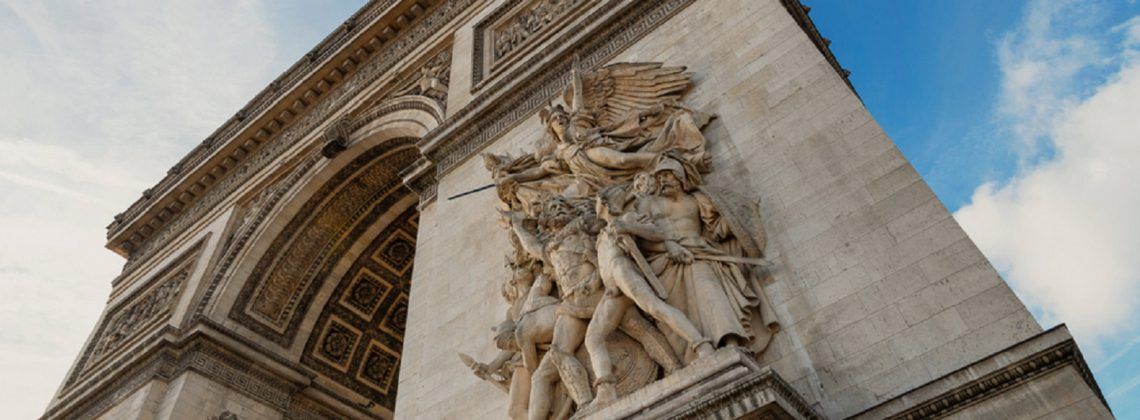You’ll never look far to spot great art in Paris. In fact, you could say the City of Lights is every bit the city of amazing art. Need a starting point for the art, architecture, and sculptures you have to see in Paris? This is it! Check out the most iconic art and architecture you must see in Paris.
Pro Tip: Planning what to do on your trip to Paris? Bookmark this post in your browser so you can easily find it when you’re in the city. This article isn’t meant to replace a guided visit—quite the opposite! Reading up on an attraction will make a guided tour more memorable and interesting! Check out our top Paris tours for a memorable trip and our guide to Paris for more planning resources.
17 of Paris’ Most Important Pieces of Art and Architecture
As historian Alastair Horne explains, Paris first gained admirers in the days of ancient Rome. In those years, Horne says that wealthy Romans (and even emperors) loved the natural vineyards, fig trees, and climate of the place they called Lutetia. In later centuries, Paris and its landscape would foster generations of artists and philosophers.
Indeed, historian Michael Goebel explains that Paris in later centuries emerged as a cultural melting pot, incorporating inventive minds from around the world. And now we get to enjoy the fruits of such creative interactions whether it be in the most iconic paintings in the Louvre, the sculptures on the magnificent Arc de Triomphe, or the stunning galleries in Paris’ finest fashion stores.
In fact, the variety of art you’ll find in Paris speaks to the city’s quality as a melting pot of diverse peoples and cultures from around the world. While this has cut both ways—there are many dark stories behind such art—it also speaks to the city’s status as a beacon of hope and inspiration for people from across the globe.
They say one lifetime is not enough to see all of Rome, but you could say the same for Paris and its architecture and art scene. And so, we must begin with a disclaimer that this list is not an exhaustive list of the city’s must-see art treasures. Fortunately for you, this list of our favorite 17 pieces and places to see in Paris is loaded with incredible art found across the City of Lights.
Moreover, the list includes a range of styles so there’s something for everyone. Huge museum buff? Great, because we have you covered with the best art in the city’s bevy of museums. More of a city walks fan? Lucky for you, Paris boasts great art to be seen simply by wandering around. Shopping addict? You’re covered too—after all, it’s Paris!
17. Centre Pompidou
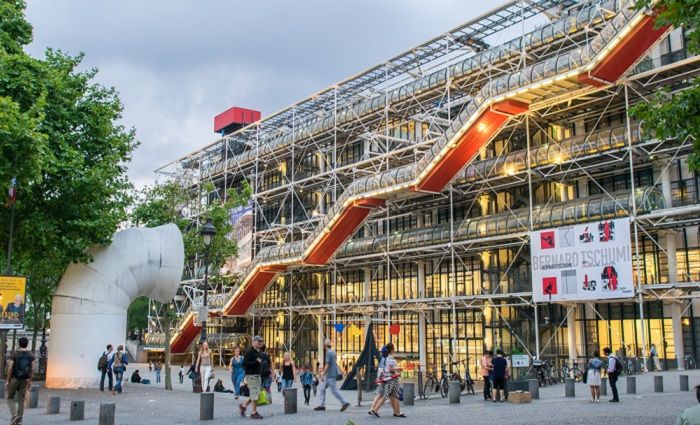
Multipurpose | Modern Art | Beaubourg
Our first stop is a sure bet to impress both museum buffs and city walk enthusiasts. Indeed, this is one of the city’s most recent cultural icons. Scholar Monique Yaari says that since it opened in 1977, the Centre Pompidou has earned its share of admirers and critics. Moreover, Yaari tells us that it brings together galleries, exhibitions, workshops, film, and dance performances among other activities.
Architect Nathan Silver says that many Parisians and the building’s architects call it “Beaubourg.” The architects included Richard Rogers and Renzo Piano among a team of visionaries.
Beyond the fascinating and controversial architecture, the main draw is the Musée National d’Art Moderne. This is France’s premier collection of art from 1905 onward. Today, you’ll only see a fraction of the more than 100,000 pieces in the museum’s collection.
Where to find it: Place Georges-Pompidou
16. Notre Dame and Iconic Churches
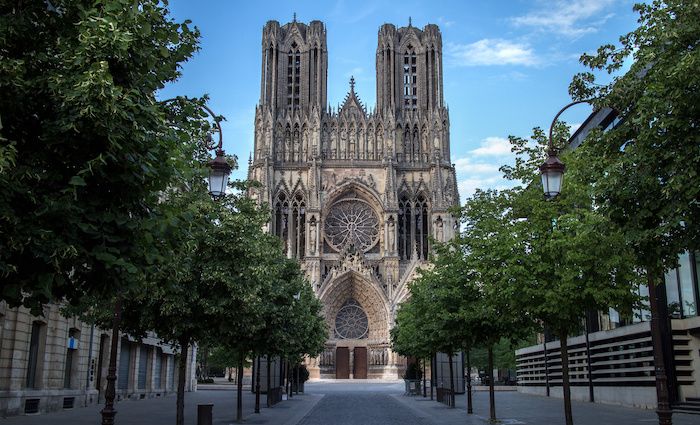
Sacré-Cœur | Sainte-Chapelle | Saint-Eustache
One of the finest examples of French Gothic architecture, Notre Dame (Cathédrale Notre-Dame de Reims) originally dates to the 12th century. Specifically, art historians Dany Sandron and Andrew Tallon explain that planning began as far back as the 1160s. As historian Joan DeJean explains, it replaced the church of Saint-Germain-des-Prés as the city’s primary place of worship. Sadly, the interior remains closed for renovations following the fire of April 2019.
One of the most famous constructions in modern Paris, Sacré-Cœur emerged between 1875 and 1919. Historian J.P. Daughton explains Sacré-Cœur symbolizes the tension between conservative Catholics and secular republican radicals. This social conflict has played a key role across decades of modern French history. There’s never really been any debate, though, that it affords great city views.
Few places in Paris impress more on a bright sunny day than Sainte-Chapelle (Chapelle Saint-Vincent-de-Paul). That is thanks to this Royal Chapel’s stained glass windows and Gothic architecture. Sainte-Chapelle, located within the Palais de Justice is the brainchild of King Louis IX. Historian Joan DeJean tells us Sainte-Chapelle dates to 1248 and served to house the king’s personal collection of holy relics.
Finally, I recommend a visit to Saint-Eustache, originally built between 1532 and 1632. Architectural historian Anne-Marie Sankovitch explains that scholars believe Saint-Eustache to be the most important church of the French Renaissance. As Sankovitch tells us, the church’s architecture has roots in antiquity, Italian Renaissance, Romanesque, and French Gothic styles. Moreover, the church boasts a 19th-century organ that is one of the largest in the country.
Where to find them: Notre Dame (Reims Cathedral) | Sacré-Cœur Basilica | Sainte-Chapelle | Saint-Eustache
Not ready to book a tour? Check out our best Paris tours to take and why.
15. Impressionists at Musée d’Orsay

Musée d’Orsay | Monet, Manet, Degas and Friends | Anti-Establishment
There are many artistic styles, movements, and artists we can identify with Paris and France more broadly. But personally, my mind turns to impressionism. The names associated with impressionism and post-impressionism are a roll call of legendary artists from Monet, Manet, Degas, Renoir, and Cézanne to van Gogh.
And there is no better place to check out impressionist and post-impressionist art than Paris’ Musée d’Orsay. Housed in the art nouveau former Orsay train station, even the building is a work of art. The heart of Orsay’s collection includes art from the mid-19th century to the outbreak of WWI in 1914. As art historian Robert L. Herbert explains, the Orsay transports us through the waves of artistic movements that reflect the modern age.
The term “impressionism” began as an insult to describe the work of these artists as art historian Ian Chilvers tells us. Yet Horst Keller explains these artists had been outcasts of the established art world, so these art world rebels hosted their own art exhibition in 1874.
Technique and subject matter are the main characteristics of impressionist art. Herbert explains that impressionists frequently began (and at times completed) paintings outdoors rather than in a studio.
Where to find it: 1 Rue de la Légion d’Honneur
Not ready to book a tour? Find out how to visit the Musée d’Orsay.
14. Famous Shopping Galleries and Department Stores
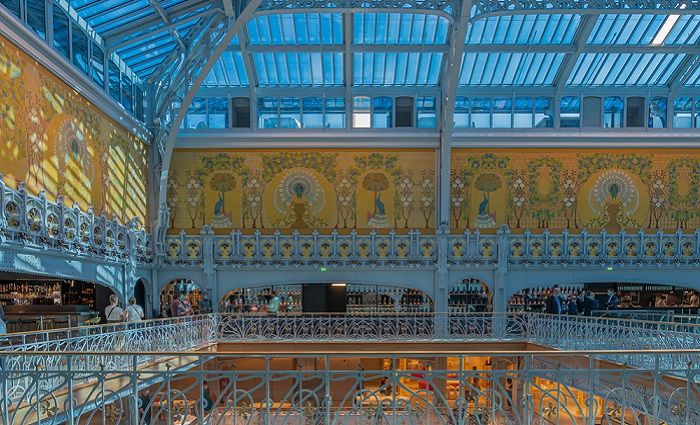
Galerie Vivienne | La Samaritaine | Le Bon Marché | Consumer Culture
Paris is where shopping meets art—especially when it comes to the buildings behind some of the city’s legendary shopping arcades and department stores. Here we’ll highlight three iconic Parisian shopping destinations: Galerie Vivienne, Le Bon Marché, and Samaritaine.
Thanks to the growing iron industry, covered shopping arcades blossomed across Paris in the 19th century. The Galerie Vivienne is one of the most beautiful and early examples of these covered passages. Maribeth Clemente explains the neoclassical Galerie Vivienne (opened in 1823) stands on the grounds of the Duc d’Orleans’ former stables. Today, you won’t find horses, but many luxury boutiques. As you shop (or just stroll through here), don’t forget to look out for its glass roof and colorful floor mosaics.
Scholar Mark H. Moss says Parisian department stores revolutionized the shopping experience of the growing middle class in the 19th century. In fact, the world’s first modern department store, Le Bon Marché, opened in Paris in the late 1830s.
Later, the infamous Samaritaine building came to life in 1905-1910, and scholar Robin Buss mentions that it incorporates various art deco and art nouveau features. Moreover, Moss explains that, gradually, the Samaritaine building embraced features from the Bon Marché including monumental stair design.
Where to find them: Galerie Vivienne, Le Bon Marché, and Samaritaine
13. Picasso’s Paris
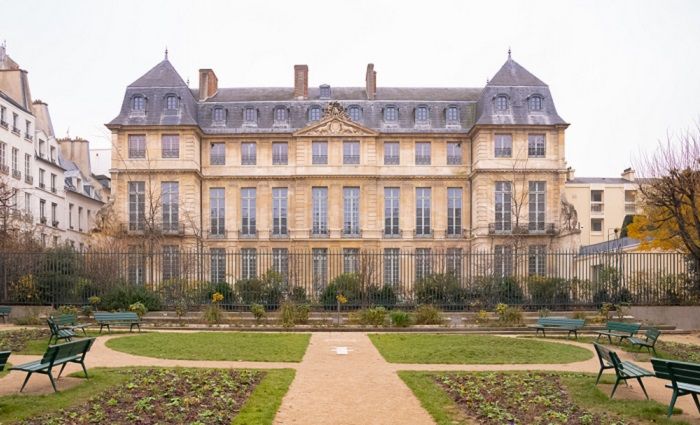
Creative Space | Hôtel Salé | Picasso’s Surveillance
You’ll find the Picasso Museum (Musée National Picasso-Paris) in the Hôtel Salé within the Le Marais district of Paris. It celebrates the legendary Spanish artist and his long sojourn in Paris. In fact, although the 20th century’s most accomplished artist was born in Spain, he spent most of his life in France. And Paris, more than anywhere else, fostered Picasso’s creative impulses as well as his network of fellow artists.
Scholar Jonathan Jones tells us that while Picasso never forgot Spain, he needed Paris to emerge as a great artist. As a result, art historian Marilyn McCully says the museum contains thousands of Picasso’s creations. Additionally, it contains works by other artists attempting to emulate Picasso’s genius.
To French authorities, Picasso remained a possibly dangerous outsider during his lifetime. In fact, historian Annie Cohen-Solal says French police surveilled Picasso for four decades. Moreover, Cohen-Solal explains, Picasso’s request for naturalization met rejection in large part due to his communist sympathies and foreign origin during the Cold War.
Where to find it: 5 Rue de Thorigny
12. The Artistry of the Paris Metro
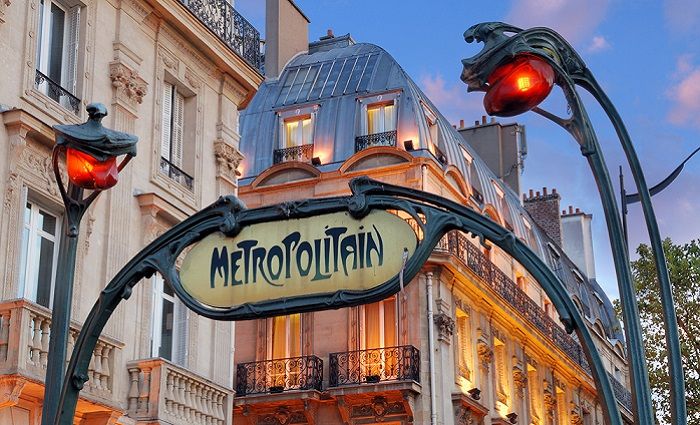
Art Nouveau and Art Deco | Hector Guimard | World Exposition
Yes, that’s right, even the city’s transport system contains proper works of art. Indeed, even many metro stations and signage are excellent reflections of art nouveau and art deco. Like several of our must-see art in Paris pieces, the metro signs date to the Exposition Universelle of 1900. You might know it as the 1900 World’s Fair or Exposition.
Scholar John Baxter tells us Hector Guimard won the competition to design the city’s metro signage. Moreover, several metro stations house art installations. For instance, Bastille (line 5 platform) has French Revolutionary newspaper-themed engraved frescoes. Furthermore, scholar Mark Ovenden tells us Cluny-La Sorbonne (line 10 platform) has a mosaic replicating the signatures of famous Latin Quarter personalities from Molière to Robespierre.
And while we’re discussing public transport, don’t miss the art and architecture of Paris’ train stations. For instance, my favorite is Jean-Baptiste Olive’s 1900 fresco of France’s regions in the Gare de Lyon. It shows you don’t need to get on a TGV train to see the varied wonders of France’s landscape. The Gare du Nord’s façade is a close second.
11. Bridges Over the Seine
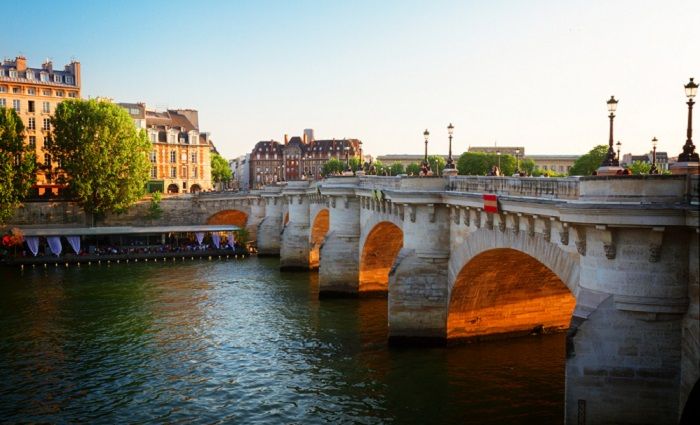
Pont Neuf | Alexander III | Pont des Arts
Paris boasts a host of iconic bridges. The oldest of the city’s modern bridges is the Pont Neuf. Historian Hilary Ballon explains that Pont Neuf emerged as a favored project of French King Henri IV in the late 16th century.
Then there is the beaux-arts style Alexander III Bridge (Pont Alexandre III) that connects the Champs-Élysées quarter with the Invalides and Eiffel Tower. To many, the bridge is the most ornate bridge across the Seine in Paris. Moreover, as historian Joan DeJean explains, its name comes not from a French monarch, but Russian Tsar Alexander III. In the late 19th century, France and Russia became close allies, hence the honorary name here.
While these first two bridges may have more historical significance, one final bridge is the most famous in Paris today. Originally built during the first empire of Napoleon I, the Pont des Arts is famous today as the love lock bridge. Check out more about Paris’ iconic bridges!
Where to find them: Pont Neuf | Alexander III Bridge | Pont des Arts
Not ready to book a tour? Check out our best Paris tours to take and why.
10. Underrated Medieval Art
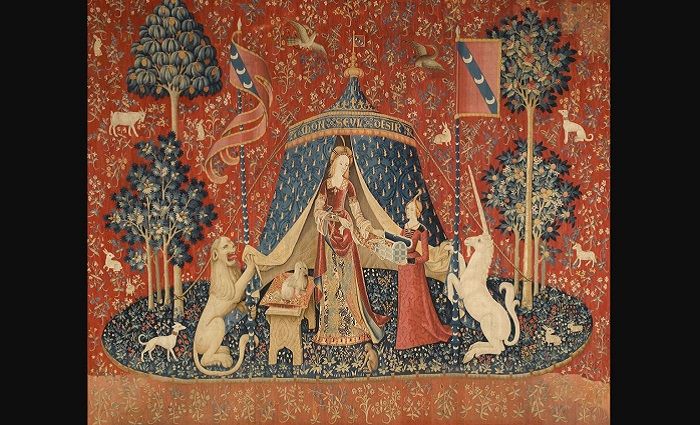
Musée de Cluny | Tapestries | Dawn of the Renaissance
As we’re seeing, Paris boasts great art from across different historical periods and parts of the world. However, medieval art is often neglected among the city’s artistic highlights. The best place to find medieval art in Paris is the Musée National du Moyen Âge in the Chateau Cluny, also known as the Cluny Museum.
Think Medieval Europe was clouded in a “dark” age? Well, the art in this museum helps us see otherwise. Art historian Viviane Huchard explains that many works here reflect a more sophisticated blend of both secular and religious art than most would imagine from the time.
However, the showstopper is a series of six tapestries known as The Lady and the Unicorn. According to art historian Conrad Rudolph, we don’t know many precise details. The tapestries, as art historian Viviane Huchard tells us, represent the five senses and date from roughly 1500. The final tapestry depicts the lady standing before a tent bearing the motto “À Mon Seul Désir” (to my only desire). Scholars continue to debate its meaning and the symbolism of the lady’s actions.
One thing is clear: as art historian Conrad Rudolph says, the tapestries demonstrate a blending of secular and religious themes and interpretations. Furthermore, art like this reveals early hints of the coming Renaissance era. As a result, Europe first from Italy and then beyond would experience radical new forms of expression and thought.
Where to find it: 28 Rue du Sommerard
9. For Sculpture Lovers: Musée Rodin
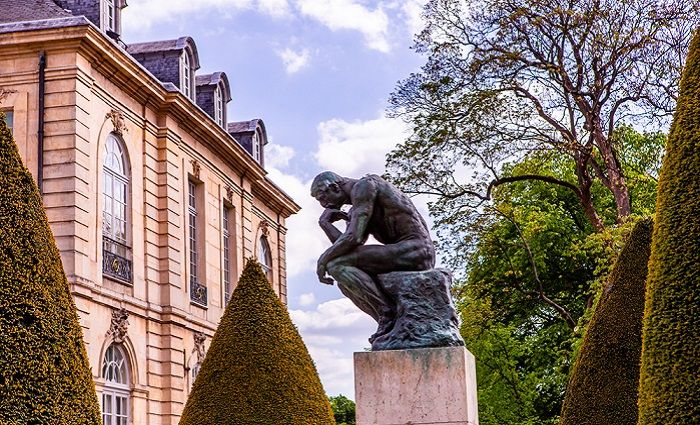
Auguste Rodin | Hôtel Biron | The Thinker
Auguste Rodin is one of the premier names in the history of sculpture. Many scholars, including art historian H.W. Janson, believed Rodin to be the finest modern sculptor. The collection is housed in the early 18th-century villa called the Hôtel Biron. Art historian Ian Chilvers mentions that Rodin donated his work to the French state in 1908 on the condition they use his former workshop and showroom to exhibit the collection.
Rodin’s statue of the writer Balzac, according to art historian Ian Chilvers, is “the most original piece of statuary created in the 19th century.” However, at the time critics rejected its radical design.
Rodin’s most recognizable work is The Thinker. You’ll find it outside in the museum’s garden. Today, Chilvers says scholars hail The Thinker as a testament to the creative power of our minds. As such, you’ll find bronze copies across the globe.
Where to find it: 77 Rue de Varenne
Not ready to book a tour? Find out how to visit the Musée Rodin.
8. Parisian Parks and Gardens
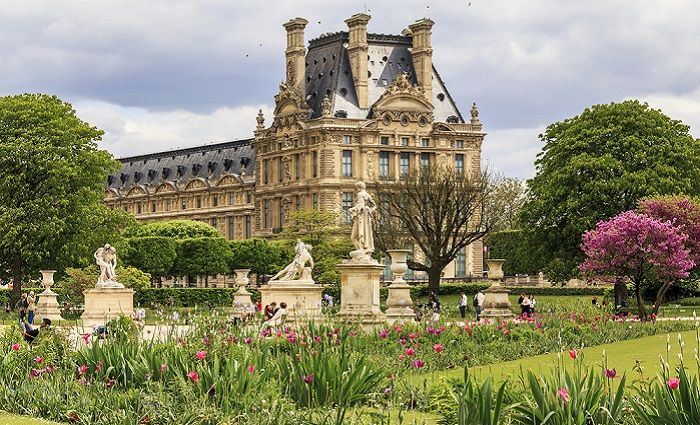
Jardin des Tuileries | Jardin du Luxembourg | Vintage Outdoor Fun
If the hustle and bustle of the city gets to you, take a break in one of Paris’ lovely parks and gardens. Our first example is the Jardin des Tuileries (Tuleries Garden). Scholar John Baxter tells us this formal garden dates to 1664.
Its designer, landscape architect André Le Nôtre, is also responsible for the gardens at Versailles. From its inception, historian Alastair Horne explains the Tuileries Garden became a fashionable spot for notable Parisians to stroll about to see and be seen.
Historian Diana Rowell tells us that Napoleon dedicated the Jardin du Luxembourg to the children of Paris. Thus, while it might be a formally laid out garden of terraces, its calling card is fun kid-friendly outdoor activities. For example, head here to chill out and prod vintage mini sailboats in the Grand Bassin pond.
Where to find them: Jardin des Tuileries | Jardin du Luxembourg
7. Notable Tombs of Paris
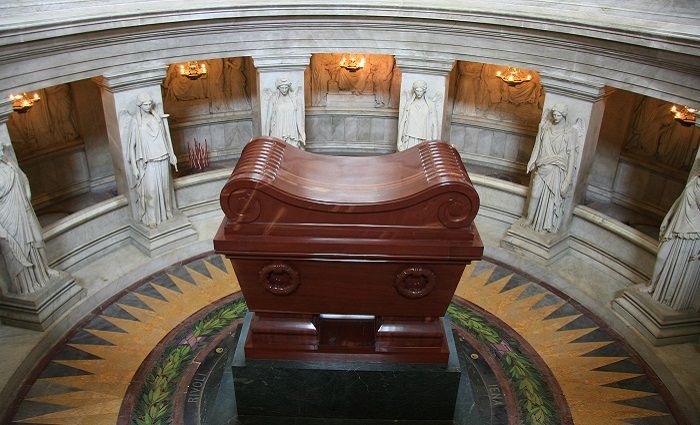
Panthéon | Tomb of Napoleon | Père Lachaise Cemetery
Paris contains artistic gems among its revered final resting places for legendary names. The first of these is the Panthéon, with its impressive neoclassical dome visible from many areas of Paris. As historian Joan DeJean tells us, it began as the church of Sainte-Geneviève.
However, historian Diana Rowell explains the French Revolution resulted in the creation of a mausoleum at the site in 1791. From that point, though, the Panthéon emerged as the final resting place of many visionaries. Names include enlightenment intellectuals from Voltaire and Rousseau to Victor Hugo and WWII French Resistance heroes.
Les Invalides is a baroque architectural treasure. The word invalides reveals its original purpose of housing and caring for ill, disabled, and retired soldiers in the 17th century. However, as historian David H. Buttery explains, it is most famous for housing Napoleon’s tomb. Originally buried where he died on the island of St. Helena, Napoleon’s remains were reinterred with great ceremony here in 1840.
Finally, there’s the world’s most visited cemetery: Père Lachaise. Opened in 1804, the cemetery contains more than 70,000 memorial monuments. As scholar John Baxter tells us, many of these are notable historical and cultural figures.
Indeed, notable burials include the composer Chopin and writers like Balzac and Proust. However, most visitors eagerly seek out the final resting place of 60s rock star Jim Morrison and legendary Irish poet and playwright Oscar Wilde.
Where to find them: Panthéon | Les Invalides | Père Lachaise Cemetery
6. Famous Portraits
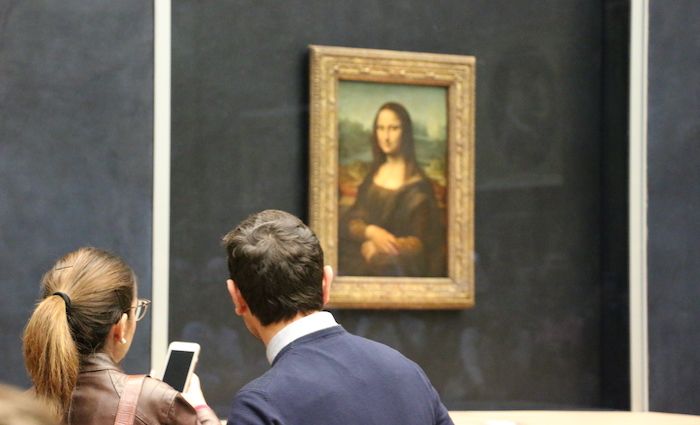
Mona Lisa | Van Gogh | Albrecht Dürer
We’ve mostly followed the trail of famous French artists. However, Paris has no shortage of iconic art by foreign artists. We’ve all been drawn to several examples of famous portraits by legendary foreign artists familiar to us all.
We must start with one of, if not, the most famous artworks in the world. Leonardo da Vinci’s Mona Lisa is but part of this Italian Renaissance master’s presence in the Louvre’s collection. For example, the Virgin or Madonna of the Rocks (according to art historian Ian Chilvers) is one of da Vinci’s finest works. As for the Mona Lisa or La Giocanda, art historian Francesca Fiorani explains it is the portrait of a Florentine merchant’s wife.
Our next example comes from Dutch post-impressionist legend Vincent van Gogh. The Musée d’Orsay holds an 1889 oil on canvas Self-Portrait of the artist. Moreover, some scholars, according to art historian Ian Chilvers, suggest this is the artist’s final self-portrait. Furthermore, in 2020, researchers led by Louis van Tilborgh from Amsterdam’s Van Gogh Museum confirmed another self-portrait from 1889 is an authentic work of the artist.
Finally, we cannot forget a fine example from one of Germany’s most famous artists, Albrecht Dürer. Back in the Louvre, we find Dürer’s 1493 Portrait of the Artist Holding a Thistle. Speaking of artist self-portraits, art historian Neil MacGregor says scholars believe this is one of the oldest by a northern European artist. Moreover, art historian Marcel Brion tells us that in the 15th century a thistle was a symbol of a husband’s fidelity in marriage.
Where to find them: Louvre | Musée d’Orsay
Not ready to book a tour? Find out if a Louvre Museums tour is worth it.
5. Urban Planning
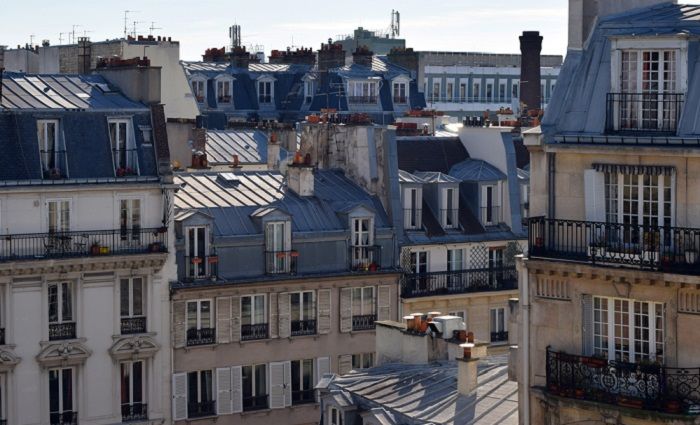
Baron Haussmann | Napoleon III | Rooftops
You have Baron Haussmann to thank if you love Paris’ urban layout with its grand boulevards, ornate bridges, and blue-gray zinc roof tiles. Historian David Pickney says Emperor Napoleon III employed Baron Haussmann to overhaul Paris in the mid-19th century.
What occurred, as historian David P. Jordan explains, is nothing short of a revolution in urban planning. Baron Haussmann’s project created the city of majestic wide boulevards, fountains, public gardens, and bridges. Moreover, Jordan explains Haussmann’s urban initiatives improved the city’s lighting and water supply.
Not all of Haussmann’s work was necessarily pretty. In fact, there are many controversies involved in this urban development project. For instance, art historian Stephane Kirkland explains Haussmann’s overhaul involved displacing Parisians and demolishing many areas of central Paris.
So, just how artistic is the urban environment? Well, a recent BBC News report even profiled an ongoing campaign to have the iconic blue-gray zinc Parisian roof tiles receive UNESCO World Heritage status!
4. Napoleon’s Paris
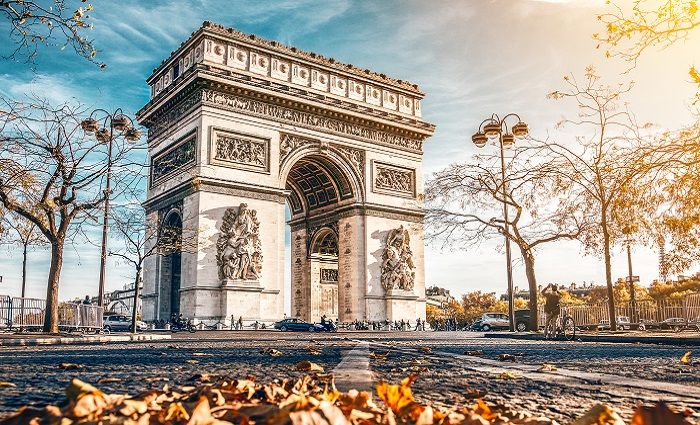
Modernizer | First Empire | Monuments
Here I’m referring to Napoleon I (1769-1821). He’s the uncle of the Napoleon who transformed Paris thanks to our friend Baron Haussmann. You know him as the guy who liked to strike a famous pose. Or as the conqueror of much of Europe in the early 19th century. But let’s be honest, all this talk about Napoleon makes you want to listen to ABBA.
Despite all those things, Napoleon contributed much to the world of art and the landscape of Paris. As historian Andrew Roberts explains, Napoleon looted much art (especially from Italy) to glorify Paris, but he also proved a generous patron of legendary names like French painter Jacques-Louis David and Italian sculptor Antonio Canova.
In fact, during his rule, Napoleon sponsored works of beautiful art, architecture, and design. Moreover, as historian David A. Bell tells us, Napoleon insisted on being involved in the planning process in many instances. In fact, Roberts says he somehow had time to draft plans for fountains, monuments, bridges, and other landmarks at the same time he was fighting on campaign!
Thus, Paris features numerous landmarks connected to Napoleon. For instance, historian David H. Buttery reminds us of Napoleonic monuments scattered across Paris such as the Arc de Triomphe du Carrousel (1806-1809) adjacent to the Louvre. Although initiated by Napoleon, the more famous Arc de Triomphe would not be completed until after his death.
Where to find it: Pl. Charles de Gaulle
3. The Era of the Romantics
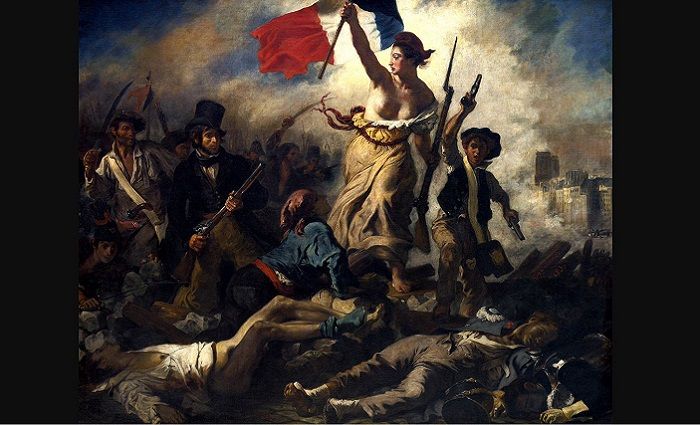
Théodore Géricault | Eugène Delacroix | François Rude
No, not like the band. We’re talking about one of the defining cultural movements of the 19th century: Romanticism. Historian Tim Blanning tells us Romanticism came around amid two massive historical transformations: the French Revolution/Napoleonic Wars and the Industrial Revolution.
In the case of France, romantics stressed neoclassical themes as well as grand symbolic depictions of the French Revolutionary and Napoleonic era. But unlike Neoclassical artists, art historian Ian Chilvers tells us the romantics emphasized emotion over logic. In other words, romantics were the definition of appealing to the heart.
Paris claims no shortage of must-see art from this movement. You’ll find our first example in the Louvre. Art historian Albert Alhadeff says Théodore Géricault produced the legendary painting The Raft of the Medusa in 1818-19. Moreover, Géricault captures a range of emotions. Furthermore, from the peril and death at the painting’s base to the optimism above where one of the survivors spots a ship, it is an emotional roller coaster, to say the least.
However, Eugène Delacroix soon emerged as Romanticism’s standard-bearer in France. Of his numerous iconic paintings, Delacroix is best remembered for the infamous Liberty Leading the People pictured above. Like much of Romantic art, Delacroix’s work promoted nationalist causes in the 19th century.
Moreover, as Blanning tells us, Liberty Leading the People captures the revolutionary spirit of the French people—in 1830, not 1789. In other words, the French Revolution strikes back against the conservative royalist elements that returned after Napoleon’s defeat in 1815. You’ll find this Delacroix masterpiece in the Louvre.
However, French Romantic art extends well beyond painting. For instance, historian David H. Buttery tells us it is sculptor François Rude’s The Departure of the Volunteers that graces the façade of the Arc de Triomphe.
Where to find them: Louvre | Arc de Triomphe
Not ready to book a tour? Check out our Paris Guide for more resources.
2. Ancient World Treasures in the Louvre
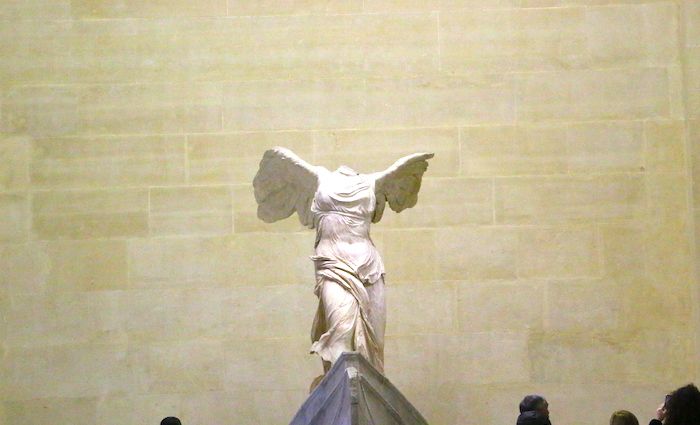
Winged Victory | Venus de Milo | Ancient Civilizations
Most of our journey thus far has concentrated on French art, sculptures, and architecture. However, there is no shortage of global art treasures on display in Paris. The Louvre, for example, boasts one of the world’s finest collections of art from various ancient civilizations.
We’ll start with the Winged Victory of Samothrace. As art historian Nigel McGilchrist explains, this dramatic seaside sanctuary served as the heart of a mysterious cult of the Great Mother. Scholars believe the piece originally stood above a rocky pool. Furthermore, art historian Ian Chilvers says it commemorated a naval victory.
If so, this sculpture captures the moment where Nike, the Greek goddess of victory, touches down on the Greek flagship to congratulate the victorious fleet. Scholars also debate about her missing arms. Chilvers believes it is likely that Nike’s right arm would be raised in a victory sign familiar to any sports fan of today.
Another important statue is the Venus, or Aphrodite in this case, which is the product of different Classical Greek and Hellenistic styles. Discovered by a humble farmer on the Greek island of Milos (Melos) in 1820, Chilvers notes that it made its way to the Louvre the following year.
What really sets this Venus apart is that it is a rare Greek original and not a Roman copy. Much is debated about what her missing arms would depict as well. Some scholars, including Ian Chilvers, hypothesize she originally held an apple-like Venus Victrix (Venus Victorious).
Moreover, the Louvre features ancient art from around the world. Other famous examples include its Mesopotamian art and Egyptian treasures like the Seated Scribe.
Where to find them: Louvre
1. Eiffel Tower
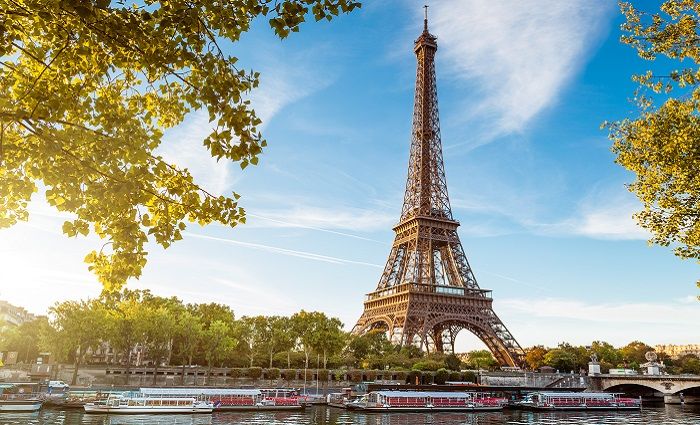
Temporary Use | Permanent Fixture | Civic Symbol
It seems inevitable that the Eiffel Tower crowns the list. In fact, it comes across as underwhelming. I would agree with that sentiment if not for one crucial point—the fact that Paris is a city with over 2,000 years of history. Moreover, for nearly its entire history, Paris existed without the Eiffel Tower gracing its skyline. Furthermore, that means generations of legendary inhabitants of Paris, including Napoleon and Victor Hugo did not live to see the Eiffel Tower.
Thus, without the Eiffel Tower’s opening in 1889, Paris, France, and Europe would look completely different in the eyes of foreign visitors. Add the fact that the Eiffel Tower was supposed to be a temporary structure and you have one iconic must-see work of art. If you have any doubt, ask yourself the question: could you imagine Paris without the Eiffel Tower? I think not.
So, what’s the Eiffel Tower’s story? Well, as scholar Benjamin Peyrel tells us, it dates to another world’s fair held in 1889. As previously mentioned, Gustave Eiffel’s art nouveau tower initially had a temporary status. Moreover, Peyrel explains that since 1889 the Eiffel Tower’s admirers consider it an impressive architectural and engineering feat. Furthermore, Peyrel says you can also call the Eiffel Tower by its nickname “Dame de Fer” or “Iron Woman.”
Where to find it: Champ de Mars, 5 Av. Anatole France
Not ready to book a tour? Find out if an Eiffel Tower tour is worth it.
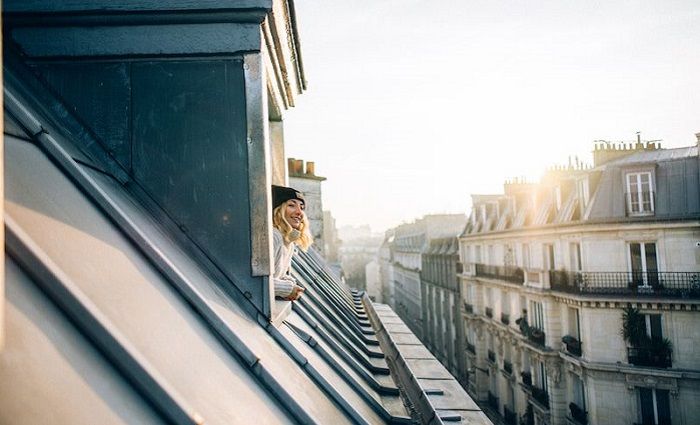
Where To Stay in Paris
With a city as magnificent as Paris, it can be hard to find the perfect hotel at the perfect price. Explore the best hotels and places to stay in these incredible neighborhoods in Paris.
